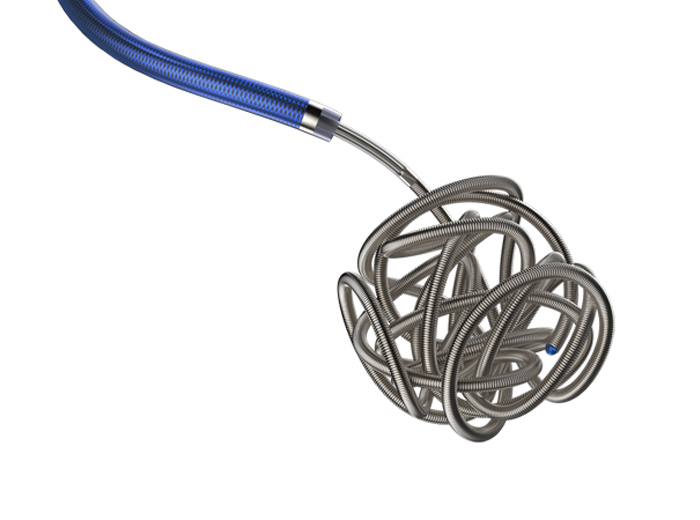the core of our corporate values
Neurointervention: The Crown Jewel of Interventional Surgery
Difficulty and Wide Range, Neurovascular Intervention Is Known as the Pearl on the Crown of Interventional Surgery
Neurointervention is a crucial component of interventional medicine, employed for the diagnosis and treatment of intracranial vascular issues. In the realm of neurointerventional treatment, the primary approach involves puncturing the femoral artery (or femoral vein, carotid artery, radial artery, among other brain-related vessels). With the aid of a digital subtraction angiography system (DSA), the procedure is performed under X-ray fluoroscopy. Through the use of specialized catheters and puncture devices, medical professionals navigate to the vessels within the neck or intracranial region to diagnose and treat pathologies associated with neck or intracranial vessels, including spinal cord vascular conditions.
The cerebral vascular structures are intricately convoluted, making neurovascular interventions notably challenging. In comparison to cardiovascular interventions, cerebral vasculature is notably more complex:
In terms of quantity: Cardiovascular vessels can be categorized into three main branches - the left anterior descending, circumflex, and right coronary artery. On the other hand, cerebral vasculature consists of six main branches, including bilateral vertebral arteries, bilateral internal carotid arteries, and bilateral subclavian arteries.
In terms of structure: Unique to intracranial anatomy, a venous sinus forms between cerebral veins and neck veins, creating a specific feature. This results in a diverse and complex manifestation of symptoms for intracranial vascular conditions. Furthermore, cerebral arteries are thin, lengthy, highly tortuous, and lack pulsatility.
Additionally, the arterial walls are thinner, making them more prone to rupture and bleeding when there is a sudden increase in blood pressure. As a result, neurovascular intervention treatment is notably more challenging than cardiovascular intervention. It demands higher levels of technical expertise, specialized neuro medical devices, and is often regarded as the jewel in the crown of interventional procedures.
Based on the Nature of the Condition, Neurovascular Interventions Can Be Broadly Categorized into Two Main Groups
Ischemic cerebrovascular disease, which is more commonly seen clinically, is caused by arterial stenosis (the brain is supplied by bilateral carotid arteries and vertebral arteries, with the bilateral carotid arteries accounting for about 80-90% of the cerebral blood supply) due to arteriosclerosis and other reasons, resulting in reduced or complete obstruction of blood flow, cerebral blood circulation disorders, and a series of symptoms of brain tissue damage. Specific symptoms include transient ischemic attack, cerebral infarction, cerebral steal syndrome, chronic cerebral ischemia, etc.
Hemorrhagic cerebrovascular disease, the pathogenesis of which is caused by rupture of cerebral arterial blood vessels (aneurysms, cerebral vascular malformations, non-aneurysmal vascular rupture around the midbrain, etc.) resulting in subarachnoid hemorrhage and intracranial hemorrhage such as extradural and subdural hemorrhage.
According to Different Functions and Indications, Neurovascular Intervention Instruments Can Be Classified into the Following Three Categories
Pathway category: mainly used to establish a vascular pathway from the blood vessel to the target site (lesion site) for various indications. The neurovascular medical devices mainly include sheaths, catheters for imaging, guiding catheters, intermediate catheters, occlusion compression systems, etc.
Hemorrhage category: used for occlusion and embolization of ruptured blood vessels and intracranial malformations in hemorrhagic cerebrovascular diseases (such as unruptured aneurysms and ruptured aneurysms), which include microcatheters, microguidewires, neurovascular embolization coils systems, balloons, stents, embolic agents, etc.
Ischemia category: used for removal of thrombus and recanalization in ischemic cerebrovascular diseases (such as carotid artery stenosis, unilateral artery stenosis, bilateral artery stenosis, etc.), which include neurovascular microcatheter, microguidewires, balloons, stent systems, protective devices, imaging pressure measurement, suction devices, etc.










